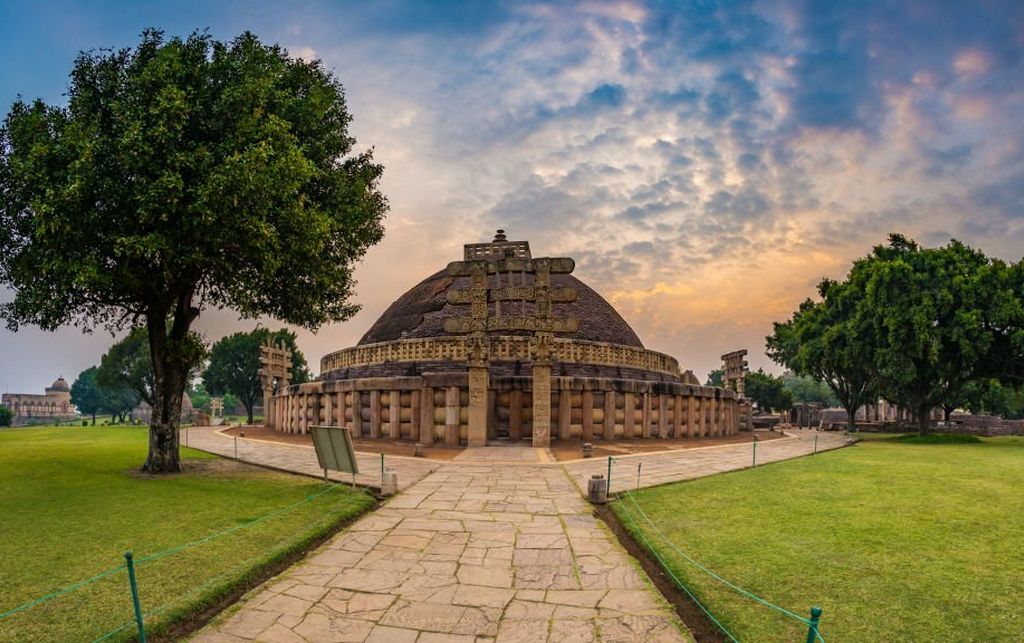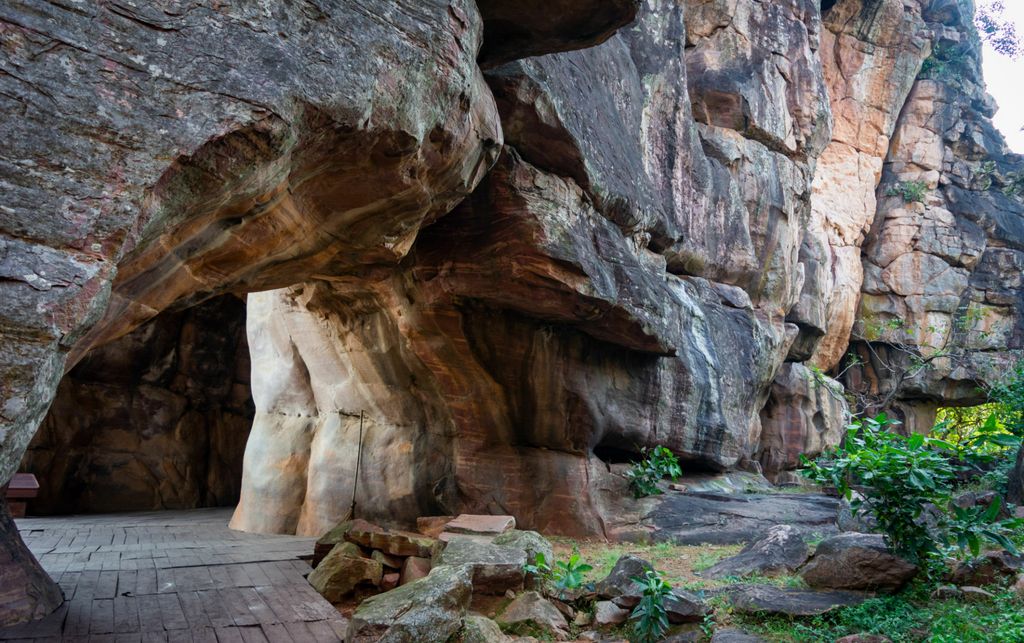Introduction
Bhopal, the capital of Madhya Pradesh, is a fascinating mix of history, culture, and modernity. Often referred to as the “City of Lakes,” Bhopal has a rich heritage that dates back to the Parmara dynasty, followed by the Mughal era and the reign of the Nawabs, whose influence is still visible in the city’s architecture and culture. The city beautifully blends its ancient and modern aspects, with historic mosques and palaces standing alongside contemporary buildings.
Visiting Bhopal is a truly immersive experience that offers a deep dive into its royal history, vibrant markets, and natural beauty. The city’s attractions are diverse, ranging from the historic Taj-ul-Masjid, one of India’s largest mosques, to the peaceful Upper and Lower Lakes, which offer a serene escape from urban life. Just outside Bhopal, places like Sanchi, with its ancient stupas, and Bhimbetka, known for prehistoric rock shelters, provide further exploration of India’s rich historical tapestry.
Bhopal is also a food lover’s paradise, offering a delightful blend of Mughlai and regional flavors. From aromatic biryanis and kebabs to the sweet treats of jalebi and phirni, the city’s cuisine is sure to satisfy any palate.
Whether you are interested in history, nature, or food, Bhopal has something to offer everyone, making it a must-see destination in central India.
History of Bhopal
Bhopal, the capital of Madhya Pradesh, has a deep historical legacy that traces back to ancient times. It is believed that Raja Bhoj of the Parmara dynasty founded the city in the 11th century, constructing the iconic Upper Lake (Bhojtal) as a water reservoir. Initially called Bhojpal, the city was named after its founder and the dam (pal) he built. Over the centuries, Bhopal saw the rise and fall of various dynasties, including the Rajputs and Mughals, each leaving a lasting impact on its cultural and architectural heritage.
The city began to take its modern form in the early 18th century when Dost Mohammad Khan, an Afghan soldier in the Mughal army, established the Bhopal State. Under the rule of the Nawabs and the notable Begums of Bhopal, the city became a center of Islamic art, culture, and education, while maintaining its ancient and medieval charm.
Places to Visit in Bhopal
Bhopal is a city rich in history and culture, offering a wide range of attractions for different interests. From grand mosques to tranquil lakes and museums that showcase its rich past, Bhopal is a city that invites exploration.
Taj-ul-Masjid
Taj-ul-Masjid, one of the largest mosques in India, is an architectural masterpiece that highlights the city’s Islamic heritage. Built by Nawab Shah Jahan Begum in the 19th century, the mosque features pink facades, towering minarets, and domes that dominate Bhopal’s skyline.
The mosque is not only a place of worship but also an Islamic learning center, hosting a madarsa on its grounds. Its grandeur is most evident during the annual Ijtima, a three-day religious gathering that attracts thousands of devotees from across India.
Upper Lake (Bhojtal)
Bhojtal, also known as Upper Lake, is India’s oldest man-made lake, created by Raja Bhoj in the 11th century. Spanning over 31 square kilometers, this vast lake is a lifeline for the city, providing drinking water and recreational activities.
Surrounded by a well-maintained park, Van Vihar National Park, and a boat club that offers various water sports, Bhojtal’s serene environment and scenic beauty make it a popular destination for both locals and tourists.
Lower Lake (Chhota Talab)
Adjacent to the Upper Lake lies the picturesque Lower Lake, or Chhota Talab. Separated from its larger counterpart by the Pul Pukhta bridge, the Lower Lake is smaller but equally charming. Surrounded by lush greenery, it’s an ideal spot for a peaceful evening stroll or a relaxing boat ride. The view of the city from the lake, especially at sunset, is truly breathtaking.
Shaukat Mahal and Sadar Manzil
Located in the heart of Bhopal, Shaukat Mahal is an architectural gem that stands out for its unique Indo-European design. Built during the reign of Sikander Begum, the palace was designed by a French architect and showcases a blend of Gothic and post-Renaissance styles. Once the residence of the ruling Nawabs, the palace features delicate floral patterns and intricate carvings. Adjacent to Shaukat Mahal is Sadar Manzil, which served as the Hall of Public Audience during the Nawabi era.
Today, these buildings are important landmarks that reflect Bhopal’s royal heritage.
Bharat Bhavan
Bharat Bhavan is a cultural hub and museum that plays a central role in Bhopal’s artistic life. Established in 1982, the complex includes an art gallery, a museum of tribal and folk art, an open-air amphitheater, and a library dedicated to Indian poetry. Bharat Bhavan offers visitors a chance to explore contemporary Indian art, traditional crafts, and performances by renowned artists, making it a must-visit for anyone interested in the arts and cultural heritage of India.
State Museum
The State Museum of Bhopal is a treasure trove of artifacts that provide insights into the rich history and culture of Madhya Pradesh. The museum’s galleries cover a wide range of topics, including archaeology, natural history, and tribal culture. Highlights include sculptures from ancient temples, manuscripts, coins, and rare fossils. The museum also has a section dedicated to the Bhopal Gas Tragedy, offering a poignant reminder of the city’s past.
Indira Gandhi Rashtriya Manav Sangrahalaya (National Museum of Mankind)
This unique museum showcases the rich cultural heritage of India’s diverse tribal communities. Spread across 200 acres, the museum features open-air exhibits that recreate traditional tribal habitats, providing visitors with an immersive experience of India’s indigenous cultures, crafts, and lifestyles. The museum also houses a vast collection of artifacts, photographs, and audio-visual presentations, making it a valuable resource for understanding India’s anthropological history.
Also Read : Exploring Kanha National Park
Bhojeshwar Temple
Near Bhopal, the Bhojeshwar Temple in Bhojpur is renowned for housing India’s largest Shiva Lingam, standing at an impressive 7.5 feet tall and 21.5 feet in circumference. Built by Raja Bhoj in the 11th century, the temple is an unfinished architectural marvel, featuring massive stone blocks and intricate carvings that reflect its grandeur.
Despite its incomplete state, the temple’s scale and the imposing Shivling make it a significant pilgrimage site and an important part of the region’s historical and spiritual landscape.
Bhimbetka Rock Shelters
Located about 45 kilometers from Bhopal, the Bhimbetka Rock Shelters are a UNESCO World Heritage site and one of India’s most significant archaeological sites. These prehistoric shelters, believed to be over 30,000 years old, contain some of the earliest traces of human life on the Indian subcontinent.
Adorned with ancient paintings depicting hunting, dancing, and daily life, these shelters offer a fascinating glimpse into our ancestors’ lives. The site is surrounded by dense forests, adding to its appeal for both history enthusiasts and nature lovers.
Sanchi Stupa
A short drive from Bhopal leads to Sanchi, home to one of the world’s most important Buddhist monuments, the Sanchi Stupa. Built by Emperor Ashoka in the 3rd century BCE, this stupa symbolizes peace and non-violence. The site features several stupas, monasteries, and temples, all adorned with intricate carvings that depict the life of Buddha and various events from Buddhist mythology.
The Great Stupa, with its massive dome, is the most prominent structure, surrounded by four ornamental gateways representing different phases of Buddha’s life. Sanchi is a place of spiritual and historical significance, making it a must-visit for anyone interested in ancient Indian history and Buddhism.
Raisen Fort
Raisen Fort, about 45 kilometers from Bhopal, is a historical fort dating back to the early 6th century. Perched on a hill, the fort offers panoramic views of the surrounding landscape. It has witnessed several battles and has been ruled by various dynasties, including the Rajputs, Mughals, and Marathas.
The fort contains ancient temples, palaces, and water bodies that add to its historical charm. It also houses the tomb of Hazrat Peer Fatehullah Shah Baba, a revered Sufi saint, attracting devotees throughout the year.
Also Read : Discovering Delhi – A Journey Through Time and Taste
Bhopali Cuisine: A Blend of Mughlai and Regional Flavors
Bhopal’s cuisine is famous for its rich, aromatic dishes that blend Mughlai influences with local flavors. The city’s signature dishes often feature slow-cooked meats and robust, spiced gravies that offer deep, satisfying flavors. Some of the most iconic dishes include:
Bhopali Paya
A spicy soup made from goat trotters, simmered for hours to develop deep, rich flavors, usually enjoyed with naan or roti.
Bhopali Gosht Korma
Tender meat pieces cooked in a thick, creamy sauce infused with a blend of aromatic spices.
Keema Pulao
A fragrant rice dish featuring minced meat, cooked with spices and garnished with fresh herbs.
Rogan Josh
A spicy lamb curry rich in flavors, typically served with rice or Indian bread.
Street Food: Bhopal’s Vibrant Snack Scene
Bhopal’s street food is lively and diverse, offering a variety of snacks that cater to different tastes. Some must-try street foods include:
Poha
A light and flavorful breakfast dish made with flattened rice, often served with a side of jalebi (sweet syrupy spirals).
Bun Kabab
A local take on the burger, featuring spiced meat or potato patties stuffed into soft buns, usually served with tangy chutneys.
Chaat
A popular street snack made with crisp fried dough, potatoes, and a variety of chutneys and spices, offering a burst of flavors in every bite.
Bhopali Batata Poha
A savory snack made from flattened rice, garnished with fresh coriander, onions, and a squeeze of lime.
Desserts: Sweet Delights of Bhopal
For those with a sweet tooth, Bhopal offers a range of traditional desserts that are rich, creamy, and full of flavor:
Shahi Tukda
A royal dessert made from fried bread soaked in saffron-infused milk, topped with dry fruits, and served warm.
Phirni
A creamy rice pudding flavored with cardamom and rose water, often served in small earthen pots for an authentic touch.
How to Reach Bhopal: Connectivity Options
From Major Cities in India:
1. By Air:
Delhi: Bhopal’s Raja Bhoj Airport (BHO) is well-connected to Delhi’s Indira Gandhi International Airport (DEL). Regular flights operate between the two cities, with a flight duration of approximately 1.5 hours.
Mumbai: Direct flights from Chhatrapati Shivaji Maharaj International Airport (BOM) to Bhopal typically take around 2 hours.
Bengaluru: Flights from Kempegowda International Airport (BLR) to Bhopal usually take about 2.5 hours.
Kolkata: There are direct flights from Netaji Subhas Chandra Bose International Airport (CCU) to Bhopal, taking around 2.5 hours.
2. By Rail:
Delhi: Trains from New Delhi Railway Station (NDLS) to Bhopal Junction (BPL) take approximately 12-15 hours, with several express and superfast trains available.
Mumbai: Direct trains from Mumbai’s Chhatrapati Shivaji Maharaj Terminus (CSTM) or Lokmanya Tilak Terminal (LTT) to Bhopal Junction take around 16-18 hours.
Bengaluru: Trains from Bengaluru City Railway Station (SBC) to Bhopal Junction can take 30-35 hours, with various connecting options available.
Kolkata: Trains from Howrah Junction (HWH) to Bhopal Junction generally take around 22-24 hours.
3. By Road:
Delhi: The distance from Delhi to Bhopal is about 750 kilometers, and driving typically takes around 12-14 hours. The route is well-connected via National Highway 44 (NH44).
Mumbai: The drive from Mumbai to Bhopal is approximately 850 kilometers and can take around 15-18 hours, depending on traffic and road conditions. The route typically follows NH47.
Bengaluru: The distance is around 1,200 kilometers, and driving can take 18-22 hours. The route generally follows NH44 and NH46.
Kolkata: Driving from Kolkata to Bhopal covers approximately 1,100 kilometers and takes around 18-22 hours via NH12 and NH46.
Conclusion
Bhopal emerges as a vibrant and multifaceted destination, offering a captivating blend of historical richness, cultural diversity, and natural beauty. The city’s illustrious past, marked by its ancient origins and the influential Begums of Bhopal, is reflected in its grand architectural landmarks and rich cultural traditions. Bhopal’s natural charm is highlighted by its serene lakes, lush parks, and nearby wildlife sanctuaries, including the promising Ratapani Wildlife Sanctuary and the expansive Satpura Tiger Reserve. The city’s cuisine, a delightful fusion of Mughlai and regional flavors, provides a culinary journey through its aromatic dishes and street food delicacies. From the historic Taj-ul-Masjid and the picturesque lakes to the tantalizing street food and the thriving natural reserves, Bhopal offers a unique and immersive experience that celebrates both its heritage and its harmonious relationship with nature. Whether exploring its historical sites, savoring its diverse food, or venturing into its surrounding wilderness, Bhopal stands as a testament to the rich and varied tapestry of central India’s cultural and natural landscape.









